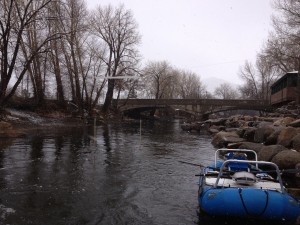No man, proclaimed Heraclitus twenty five centuries ago, ever steps into the same river twice. He was, of course, referring as much to the person setting foot in the river as the river itself. I thought about this recently as I sat on the banks of the Upper Colorado, my first visit to this stretch of the river for twenty three years.
Back then, I was newly arrived in the States, not yet fully savvy to the ways and foibles of America and Americans. “I Can’t Believe It’s Not Butter”, driving on the wrong side of the road in vehicles the size of a Third World apartment, breakfasts so big they require several plates to contain them, the aridity of the landscape, and the fact that people would pay good money to float for days on flat water, while mile-long coal trains rumbled by and the occasional semi kicked up dust working through the gears hauling hay from a nearby ranch, itself festooned with barbed wire and threats against trespass.
I was looking at the river through the eyes of a whitewater rafter then, not as an angler now. River running in New Zealand tended to be more of a wilderness experience, the rougher, more remote and wilder the better. It took getting deeper into fishing to see another side of a river – long grassy banks with gently swirling current seams and undercuts, subtle shading and drop offs, foamy back eddies that held promise and potential. The pace is more leisurely, the treasures more subtle.
Over the ensuing years my perception of what passes for the color green has changed. I now drive around in my own Third World apartment. I still try to limit my breakfast to a single plate. While train tracks are a distraction, I understand why they are where they are. Dry has as much claim to beauty as lush.
And through it all the river flows with its own timeless dignity that transcends the transient insult of dams, diversions and the folly of claims of ownership.



